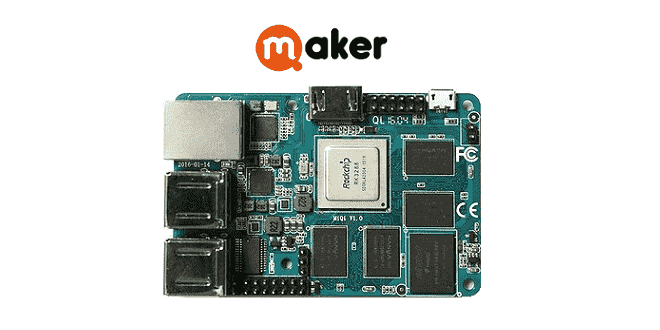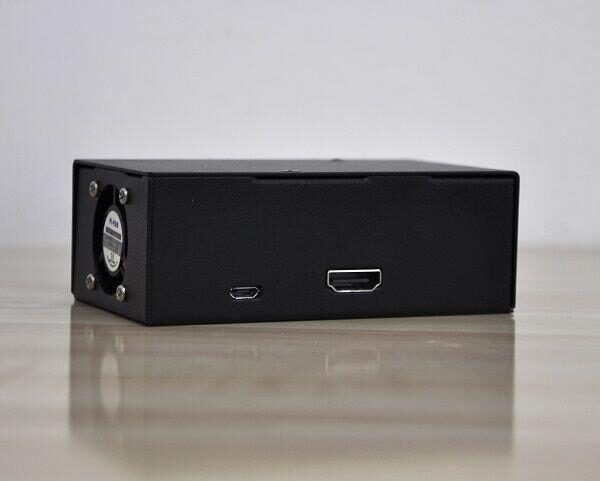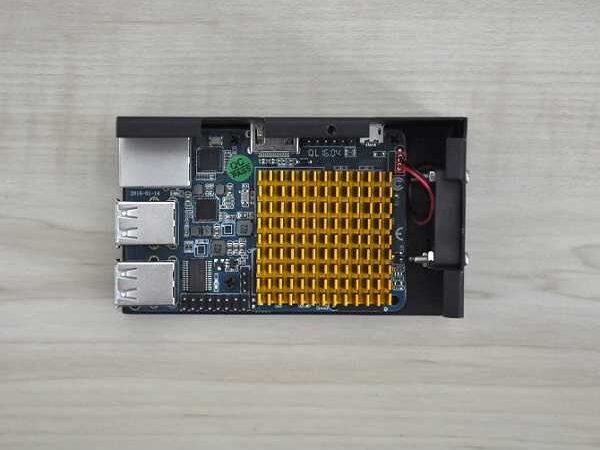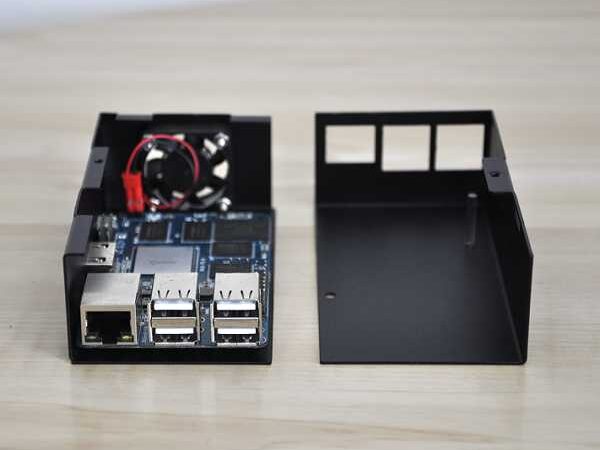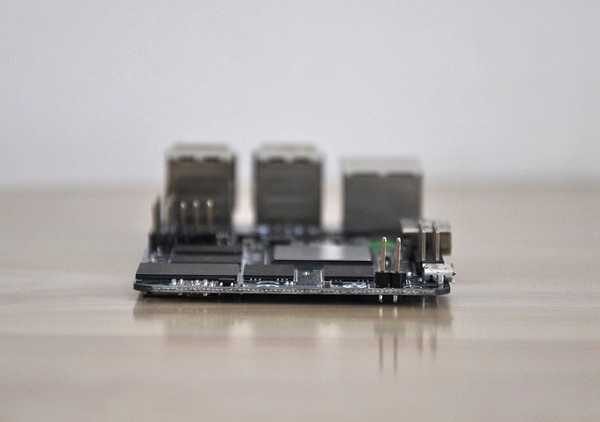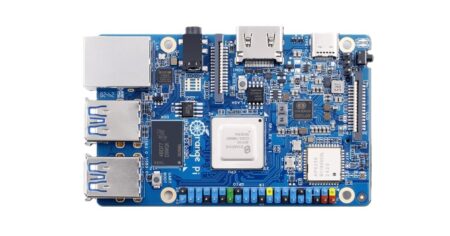MiQi RK3288 Review
The MiQi is a Single Board Computer-designed for hobbyists and professionals who are looking for a community-supported hardware development platform at low cost with high-level performance, capable of running popular operating systems such as Android 5.1, Ubuntu, and Debian.
Board specifications include a powerful RockChip RK3288 processor running at a clock speed up to 1.6 GHz, Mali-T764 GPU, 2GB RAM, 16GB eMMC Flash, x4 USB Ver 2.0 Host Ports, a Gigabit Ethernet and HDMI V2.0 interface capable of playing videos at a max resolution of 3840×2160@60p. That said, the MiQi Board Kit is currently sold for a retail price of $65 (Including shipping) and is available at the link below:
MiQi board specifications
- SoC – Rockchip 3288 quad-core ARM Cortex A17 up to 1.8 GHz with Mali-T764 GPU supporting OpenGL ES 1.1/2.0 /3.0, and OpenCL 1.1
- System Memory – 2G DDR3
- Storage – 16GB eMMC flash + micro SD slot
- Video & Audio output – HDMI 2.0 up to 3840×2160@60p
- Connectivity – Gigabit Ethernet
- USB – 4x USB 2.0 host ports, 1x micro USB port
- Debugging – Serial console header
- Expansion Headers – 16-pin header, and 12-pin header but details are not known.
- Misc – Button, unpopulated fan header
- Power Supply – 5V 2A via micro USB port
- Supported OS: Android 5.1.1, Phoenix OS (Android 5.1.1), Debian 8/9, Ubuntu 16.04, Armbian
- Dimensions – 85 x 56 mm (PCB)
MiQi Overview/ Review
Package Content
- 1x MiQi Board
- 1x Micro USB Cable
- 1x Heatsink
- 1x Metal Case
- 1x 30 mm Fan (assembled inside Case)
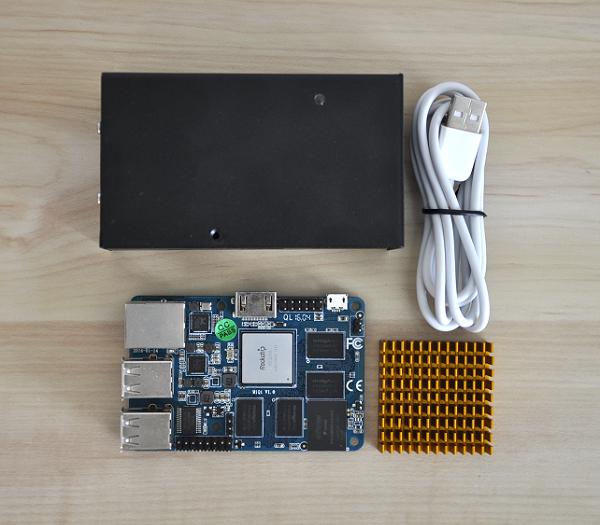
Accessories
The case included in the kit is a metal made with external measurements of 102 x 59 mm, composed of two separated sheet-metal parts bent at 90 degrees, strengthen with two small Philips screws that can easily disassemble and reassembled.
MiQi Case
MiQi Board Inside The Case
A Closer Look at the MiQi Board
Although the MiQi hardware is strong, I had a few problems or issues related to the design of this board. If we disregard the fact that this board only has Ethernet LAN and no onboard WiFi module it doesn’t have any reset, power buttons, or external camera and display interfaces that can limit developers. Because there is no power button you need to leave the power. If for some reason will need to reboot the system you will need to unplug the power adapter from the power socket or use a socket with a built-in power switch, which is not very convenient.
Another issue I had with this board, was with the 5V power GPIO FAN controller connector connected to the rear 30 mm fan. In some of the firmware, it failed to operate due to incorrect software configuration. it didn’t spin or started spinning and stopped every second. The fast solution for fixing this problem is to use pins No` 1-2 on the 14-pin GPIO header which keeps the fan spinning constantly.
For optimal cooling, you can use two fans connected to the pair of pins (Marked yellow squares in the photo). Use the rear one, and add another on top of the Heat sink.
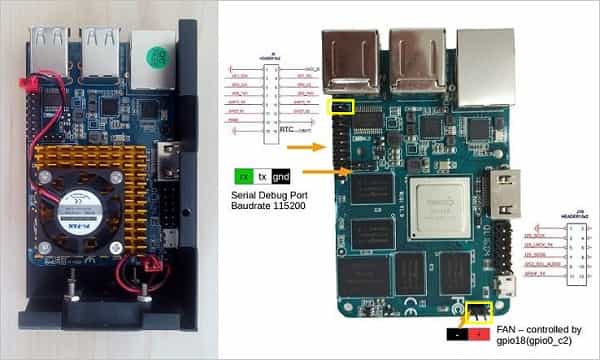
MiQi Board | Full view
- 16GB eMMC
- x4 512Mb RAM (2GB RAM)
- 12-pin expansions header
- UART Debug Port
- x2 USB 2.0
- x2 USB 2.0
- Gigabit Ethernet
- Realtek LAN Chip
- CPU
- HDMI 2.0
- 16-pin expansion header
- OTG
- Fan power Interface
- Micro-SD Slot (On the Back)
Front view
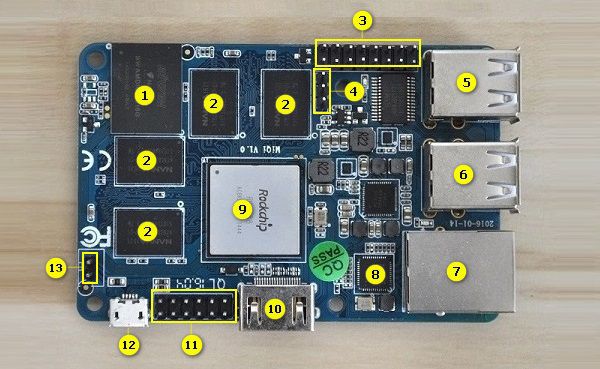
Rear view
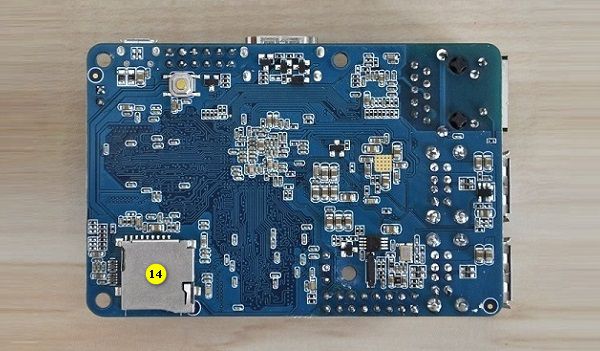
Software Support
The MiQi hardware platform supports Android, Ubuntu, and Debian OS. You can use the multi-boot Image containing Lubuntu and Android, or Debian and Android. It’s possible to load them from the emcee and also load the images from Micro SD Card which is slower. If you need to use only one type of operating system, loading single operating system images is also a good option to conserve extra storage space.
Performance under Android, Lubuntu, and Debian OS were excellent. The Rockchip RK3288 CPU is, operating in clock frequencies from 408MHz up to 1608 MHz, and with the strong Mali-T764, it really gives a nice performance boost that certainly helps in running “heavy” Games. Much better compared to low-cost $20-60 SBC currently sold on the market equipped with a low-end Mali 400 MP2 GPU. That’s why in my tests, there were no graphics lags when I moved and dragged applications windows across the desktop. The user experience was very similar to using a desktop PC / Mini PC.
Lubuntu 14.04
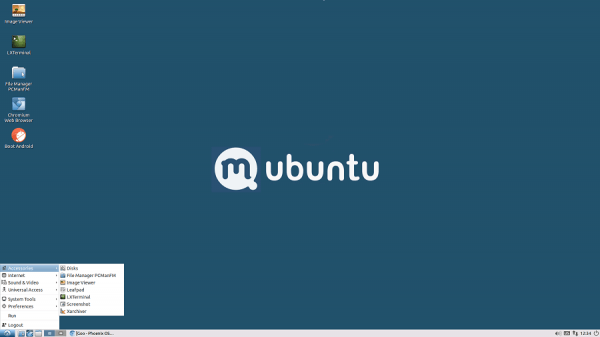
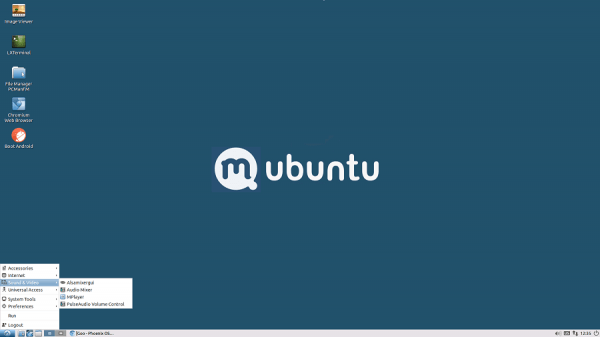
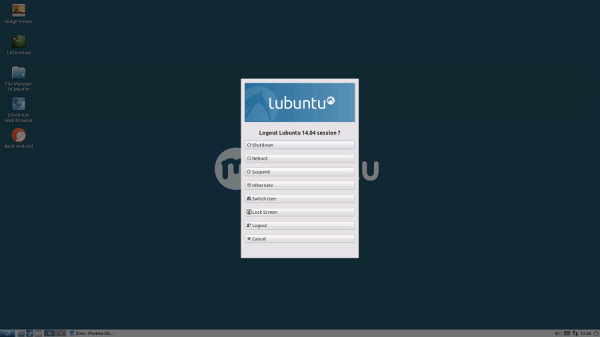
Phoenix OS (Android 5.1.1)
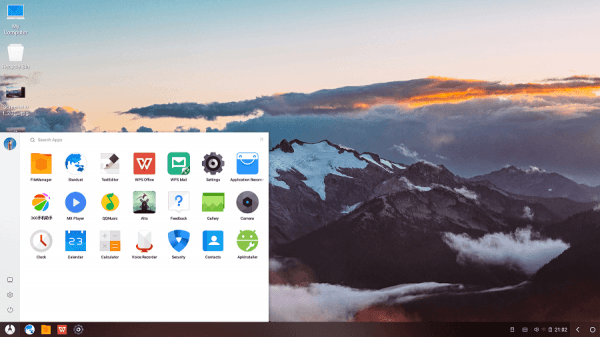
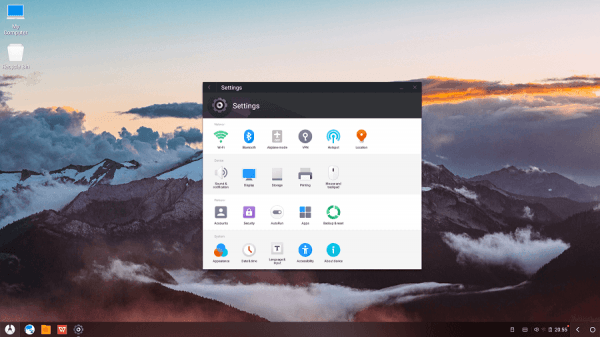
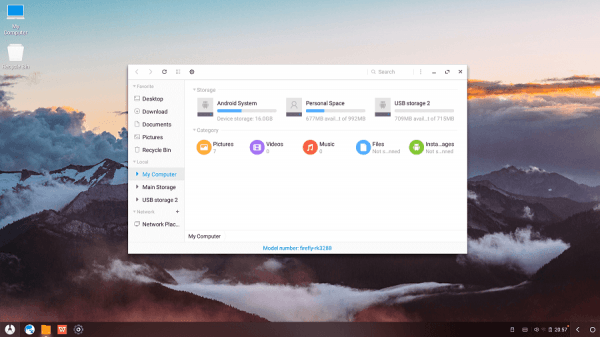
Booting from eMMC
Similar to all SBC based on Rockchip you can burn the firmware images using two popular Burning tools: ‘Rockchip Batch Tool’ and ‘AndroidTool’ which both run under Windows OS. For Linux users, the upgrade tool is also available, but both mentioned tools under the Windows environment are the easiest to use.
Booting from Micro-SD Card
Loading system files and running application files from SD Card is normally slower in terms of reading/writing speeds compared to storing system files on the eMMC Chip, but If you still want to load the system Images through the Micro-SD you can use ‘SDFormatter’ along with ‘Win32Disk Imager’ that is very simple to use.
Benchmarks
Android 5.1.1 OS, worked very fast and stable. AnTuTu Benchmark scored 52287 which is considered a high result for a single-board computer. The main reason for this high score is the contribution of the Mali-T764 GPU that boosts general performance, especially in 3D rendering and video decoding.
AnTuTu Benchmark Results
Final Words
The MiQi hardware is powerful and almost identical to the ASUS Tinker Board, except it’s missing more interfaces that can be more valuable for developers, such as MIPI CSI (Camera) and MIP SDI (Display) interfaces. For this reason, I don’t define this product as a full SBC solution.
That being said, on the more positive side the MiQi performed extremely well under Ubuntu and Android OS. If you don’t really need these interfaces it can be used as a set-top box for streaming videos, running Kodi, setting up a media-sharing server, or using it as a low-cost Mini Ubuntu-based PC Desktop / Workstation.
Pros / Cons
Pros
- High Performance & Stability
- High-level GPU (Mali-T764)
- 16GB eMMC
- 4x USB Hosts
- MultiBoot system
- HDMI 2.0 (2K & 4K Support)
Cons
- No External Camera and Display Interfaces
- No Power and Reset Buttons
- No on-board WIFI

